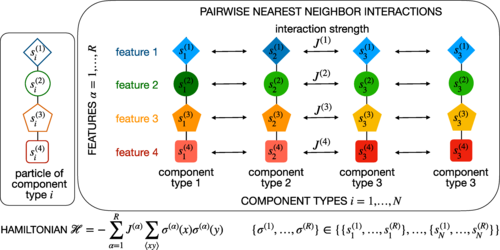
Some of the most important systems in medicine, energy, and industry hinge on the interplay between phases of matter — such as vapors, liquids, and solids — when they come into contact.
There are mixtures, such as oil and water, that are relatively easy to understand, in part because they have a minimal number of components. But what if, as is the case with cell membranes, there are thousands of components? How can scientists understand phase behavior in an environment such as that?
In a new study published in the journal Physical Review Research, lead author Isabella Graf, a postdoctoral associate in the Yale Department of Physics, and Benjamin Machta, assistant professor of physics and member of the Quantitative Biology Institute, offer a path out of the phase maze.
Graf and Machta have developed a theoretical framework to systematically reduce the complexity of mixtures with as many as a million components. Rather than examining components in the high dimensional space of possible mixtures, the new framework focuses on ranking the primary physical features of the components themselves — and how those physical features determine phase behavior.
“We believe that our work is particularly useful for systems with a huge number of components and will allow us to find principles underlying phase separation in such systems,” Graf said.
This Article has been extracted from the Yale News article of August 24, 2022. For more information, please see the full Yale News article, and the article in Physical Review Research linked below.